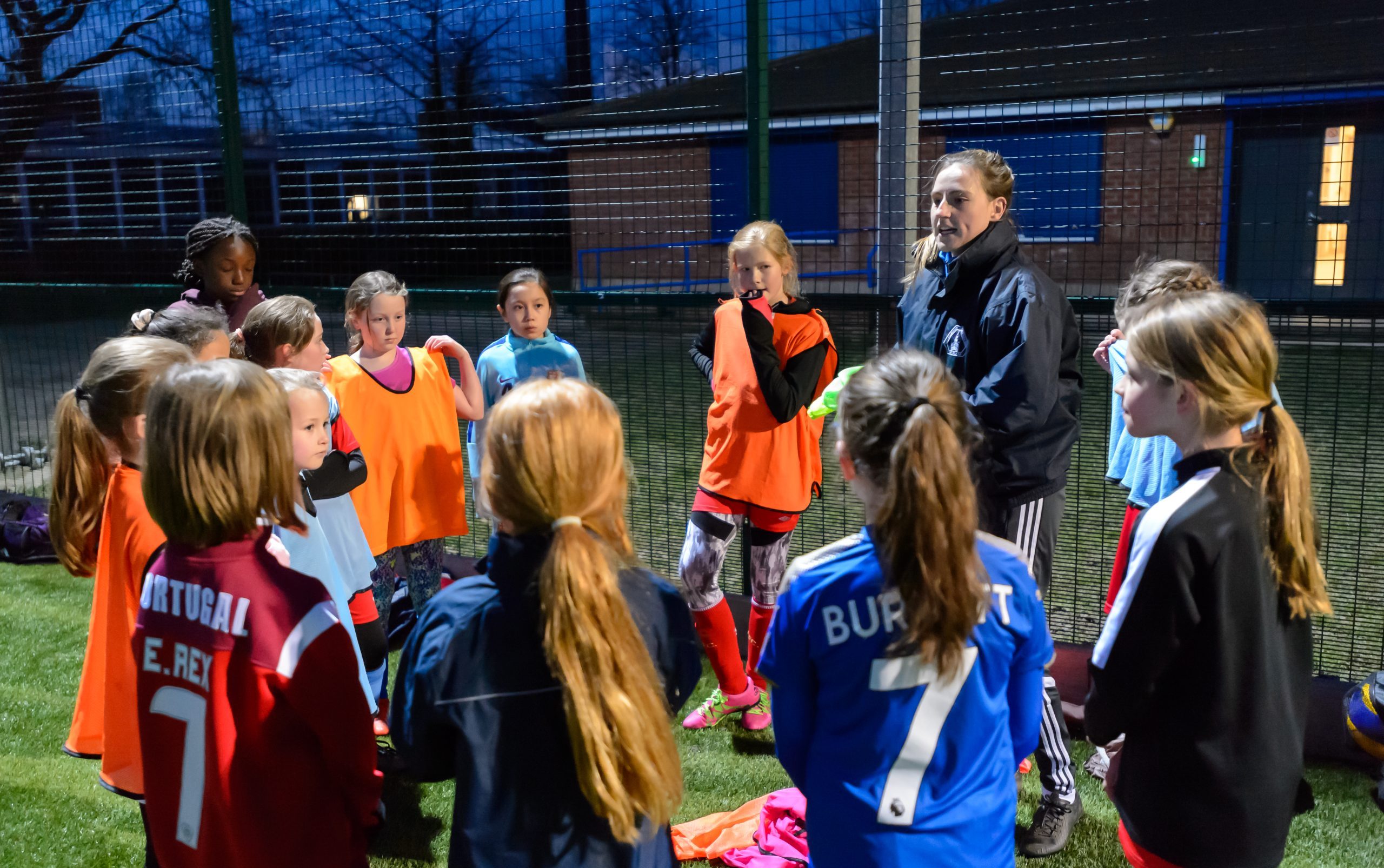
Gender Budgeting
Money spent on sport and physical activity is not shared fairly between men and women. We’re calling on sport, policymakers and the government to focus on gender budgeting and deliver fair funding for women’s sport.
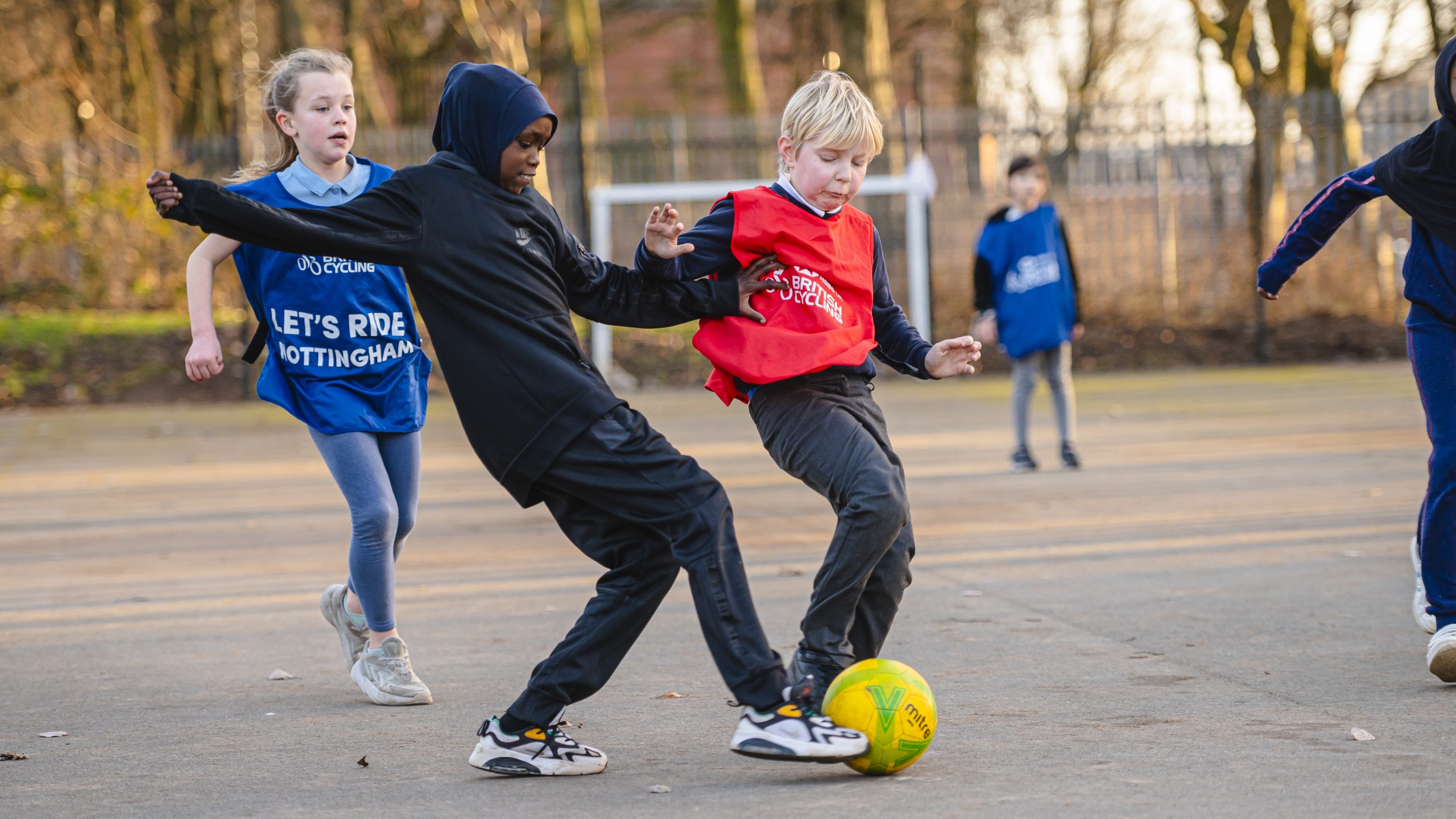
Mixed-sex sport is a growing part of the sporting eco-system, including at school and in community sport settings such as local clubs. At Women in Sport, our vision is that no-one is excluded from the joy, fulfilment and lifelong benefits of sport, but all too frequently girls and women are.
Where mixed-sex sport is happening, we want to make it work for girls. We also want to protect female-only provision where that’s the best option for girls, which it is in many cases.
Thanks to our near 40-year experience of listening to and deeply understanding the lives of girls and women, we understand both the biological realities and the limiting gender stereotypes that girls and women face. We understand the ways that these affect, and sometimes limit, girls’ and women’s participation in and love for sport.
All of this has an impact on when, and whether, mixed-sex sport works for girls.
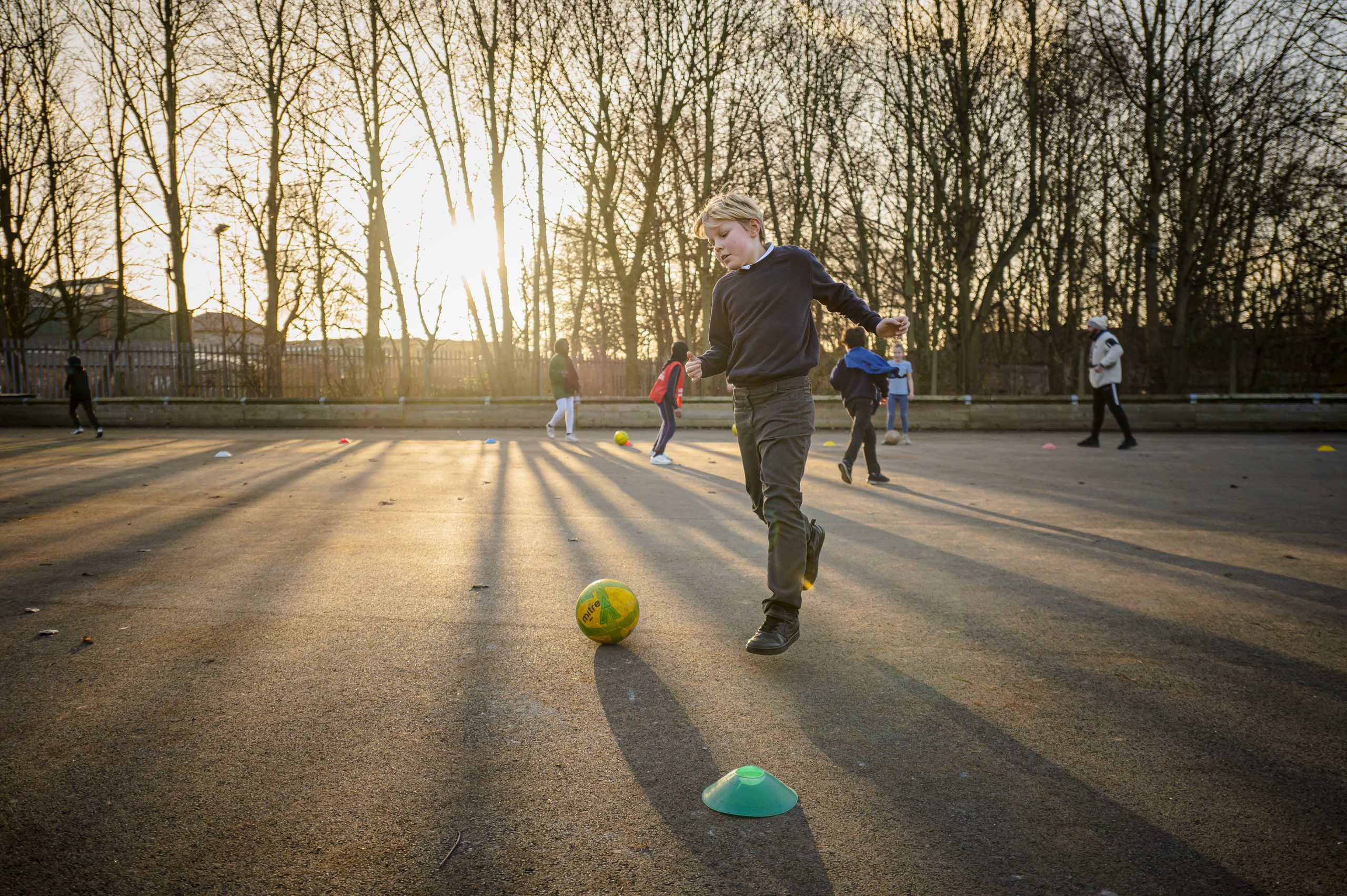
For young children, mixed-sex sport can be a positive thing for both girls and boys. There is an opportunity to create a mutually supportive and respectful environment from a very young age if mixed-sex sport is delivered in the right way. At this age sport not only develops important fundamental movement skills, it also shapes attitudes towards physical activity. In school, at primary level, due to limited teaching capacity it is also usually not practical to separate girls and boys for PE lessons in the way it might be for community sport settings.
However, to get this right, teachers and coaches must recognise that there are important differences between the sexes even at this age, both as a result of biology and stereotyping.
Biology: Even before puberty boys have a physical advantage. Baby boys are born larger on average and have more testosterone in their system both from the womb and from “boys’ mini puberty” at about six months of age. Testosterone affects speed, strength and stamina. Although some aspects can even out as children get older because girls enter puberty younger, boys will on average be slightly faster and stronger than girls throughout the primary school age bracket. This is something that must be recognised when managing mixed sport, at this age, principally to avoid demotivating the girls.
 Stereotyping: At this age, perhaps the biggest factor is stereotyping. Our research shows that gender stereotyping is still very evident and affects children from a very young age. Whether subconsciously or overtly, and by a range of voices across society, girls are told that they are delicate, and should be kind and careful not to get dirty, rather than brave or daring. These limiting expectations mean that girls are exposed to less sport and physical activity from an early age. Girls at this age already have a disadvantage in fundamental movement skills compared to their male peers. This gap can then be widened due to gender stereotyping being reinforced, again often subconsciously, by teachers, coaches and peers. Girls can quickly get stuck in a vicious cycle of a (perceived) lack of skill affecting their confidence, making them less likely to join in and, in turn, less likely to develop the skill. The sense of failure and lack of belonging this inspires is a major factor in why so many girls fall out of love with sport. In reality, it is not girls that are failing but the stereotypes they’re surrounded by and the systems these stereotypes inspire. This skills gap needs to be recognised and rectified – and absolutely not reinforced – if girls are to stand a chance of enjoying sport with the boys.
Stereotyping: At this age, perhaps the biggest factor is stereotyping. Our research shows that gender stereotyping is still very evident and affects children from a very young age. Whether subconsciously or overtly, and by a range of voices across society, girls are told that they are delicate, and should be kind and careful not to get dirty, rather than brave or daring. These limiting expectations mean that girls are exposed to less sport and physical activity from an early age. Girls at this age already have a disadvantage in fundamental movement skills compared to their male peers. This gap can then be widened due to gender stereotyping being reinforced, again often subconsciously, by teachers, coaches and peers. Girls can quickly get stuck in a vicious cycle of a (perceived) lack of skill affecting their confidence, making them less likely to join in and, in turn, less likely to develop the skill. The sense of failure and lack of belonging this inspires is a major factor in why so many girls fall out of love with sport. In reality, it is not girls that are failing but the stereotypes they’re surrounded by and the systems these stereotypes inspire. This skills gap needs to be recognised and rectified – and absolutely not reinforced – if girls are to stand a chance of enjoying sport with the boys.
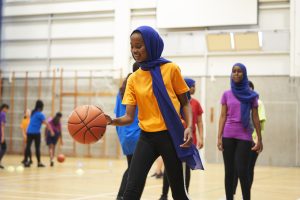
As young girls become teenagers, the big factors remain biology and stereotyping. By this age stereotyping has already had a dramatic impact on skills and self-belief. It takes new and powerful form during teenage years, more sexualised and driven by social media, and the biological impacts of puberty really kick in. The social context is different and by sixth form, there may be new positive reasons for mixed sport that is safe and fair. However, female-only options are vital during the majority of secondary school.
Biology: Female puberty can be a shocking experience and one which poses very different challenges to male puberty, especially when it comes to sport and physical activity. Whilst male puberty can help boys be active – as boys go through puberty, they grow much taller, stronger and with greater cardio-vascular capacity than their female classmates – the physical changes of female puberty create barriers. In the space of a few years, a girl’s body changes from a relatively free state of childhood into one which requires significant management, both from the perspective of periods and breasts. For girls, periods become a barrier to being active. 71% of girls avoid exercising during their period. Pain and fear of leakage are the top reasons given, along with increased tiredness and self-consciousness. Only 14% of girls say a sports bra is included on their school PE kit list, and only 36% of girls wear a sports bra for school sport, which fuels anxiety and discomfort. 56% of girls experience breast pain when exercising.
Women in Sport
Women in Sport, Reframing Sport for Teenage Girls 2022
The physical challenges of female puberty are compounded by the lack of knowledge that exists throughout society which, on the whole, simply doesn’t appreciate the changes or their impact. In the context of sport, it is vital that teachers and coaches are supported to learn more about what’s happening to girls during these years so that they in turn feel confident and comfortable supporting the girls they work with.
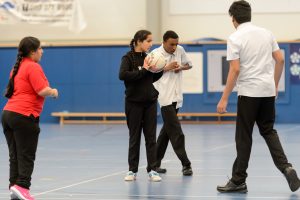 Stereotyping: The emotional challenges of being a teenage girl are huge. Long established and oppressive stereotypes fuel girls’ concerns about body image, just as their bodies are changing with puberty. Physical activity can highlight insecurities, created by the way society treats and sees girls from an early age, and make girls feel self-conscious and objectified. In our research on tackling teenage disengagement, 65% told us they avoid physical activity because they don’t like being watched, 50% don’t like getting hot and sweaty and 45% don’t feel like they have the right body shape to be involved. Whilst society tends to recognise the value of sport to troubled teenage boys, its value in alleviating anxiety in teenage girls is less widely understood. Teachers and coaches should recognise the powerful antidote it can provide to anxiety, self-harm and eating disorders that far too many girls – and far more girls than boys – suffer from. There are wider gendered health inequalities that sport at this age can play a key role in mitigating, such as osteoporosis later in life.
Stereotyping: The emotional challenges of being a teenage girl are huge. Long established and oppressive stereotypes fuel girls’ concerns about body image, just as their bodies are changing with puberty. Physical activity can highlight insecurities, created by the way society treats and sees girls from an early age, and make girls feel self-conscious and objectified. In our research on tackling teenage disengagement, 65% told us they avoid physical activity because they don’t like being watched, 50% don’t like getting hot and sweaty and 45% don’t feel like they have the right body shape to be involved. Whilst society tends to recognise the value of sport to troubled teenage boys, its value in alleviating anxiety in teenage girls is less widely understood. Teachers and coaches should recognise the powerful antidote it can provide to anxiety, self-harm and eating disorders that far too many girls – and far more girls than boys – suffer from. There are wider gendered health inequalities that sport at this age can play a key role in mitigating, such as osteoporosis later in life.
Teenage girls hear the same underlying narrative about their relationship with sport as younger girls do, but they hear it louder and from more voices. Girls hear that they are not as competitive; sport is not important for girls; they will never be as good at it compared to boys; sport can be at odds with femininity. Add to that the harassment and unwanted attention teenage girls are subject to when exercising and quite simply, taking part becomes a burden, instead of bringing freedom and joy.
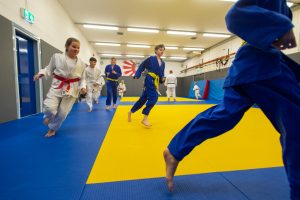 Mixed-sex sport presents challenges and opportunities for girls. Used correctly, at some stages alongside female only opportunities, it can provide an opportunity to break down barriers between girls and boys. In turn this should, in time, lessen the pernicious impact of gender stereotypes. There are already examples of excellent mixed-sex sport that can be built upon, for example in mixed relays in athletics, swimming and triathlon or non-contact team sports like touch rugby. Female only opportunities must be provided for girls in secondary school and at times in primary schools. It’s important to recognise the value that both single-sex and mixed-sex sport can bring to girls and indeed to many boys. However, the cost of getting this wrong is much greater to the girls, leading to the exclusion of even more girls from sport, denying them the joy and fulfilment that we know sport can bring.
Mixed-sex sport presents challenges and opportunities for girls. Used correctly, at some stages alongside female only opportunities, it can provide an opportunity to break down barriers between girls and boys. In turn this should, in time, lessen the pernicious impact of gender stereotypes. There are already examples of excellent mixed-sex sport that can be built upon, for example in mixed relays in athletics, swimming and triathlon or non-contact team sports like touch rugby. Female only opportunities must be provided for girls in secondary school and at times in primary schools. It’s important to recognise the value that both single-sex and mixed-sex sport can bring to girls and indeed to many boys. However, the cost of getting this wrong is much greater to the girls, leading to the exclusion of even more girls from sport, denying them the joy and fulfilment that we know sport can bring.

Money spent on sport and physical activity is not shared fairly between men and women. We’re calling on sport, policymakers and the government to focus on gender budgeting and deliver fair funding for women’s sport.
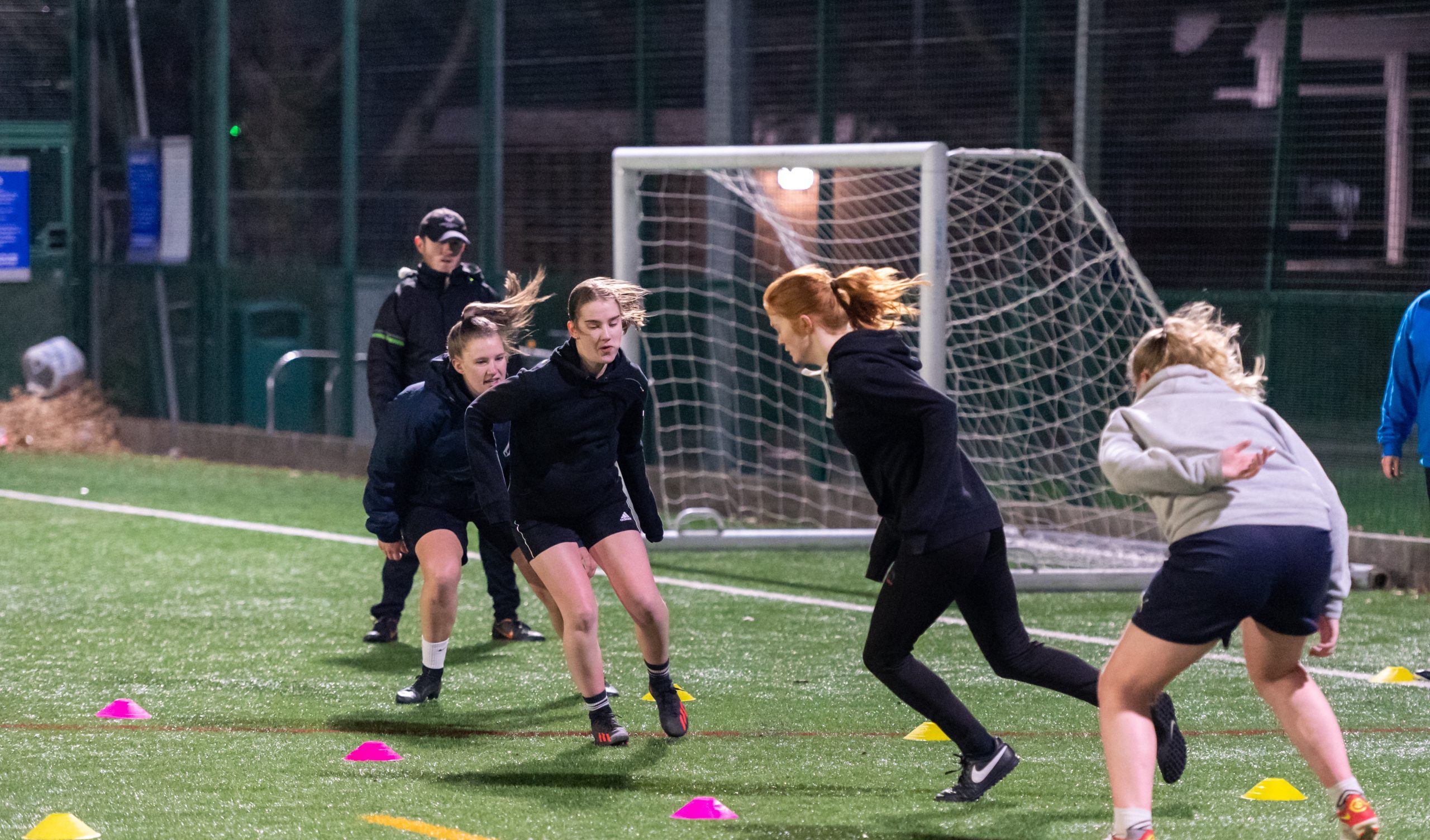
Sport is inherently physical, so the different physiologies of the sexes matter. Read about our stance on transgender inclusion in sport.